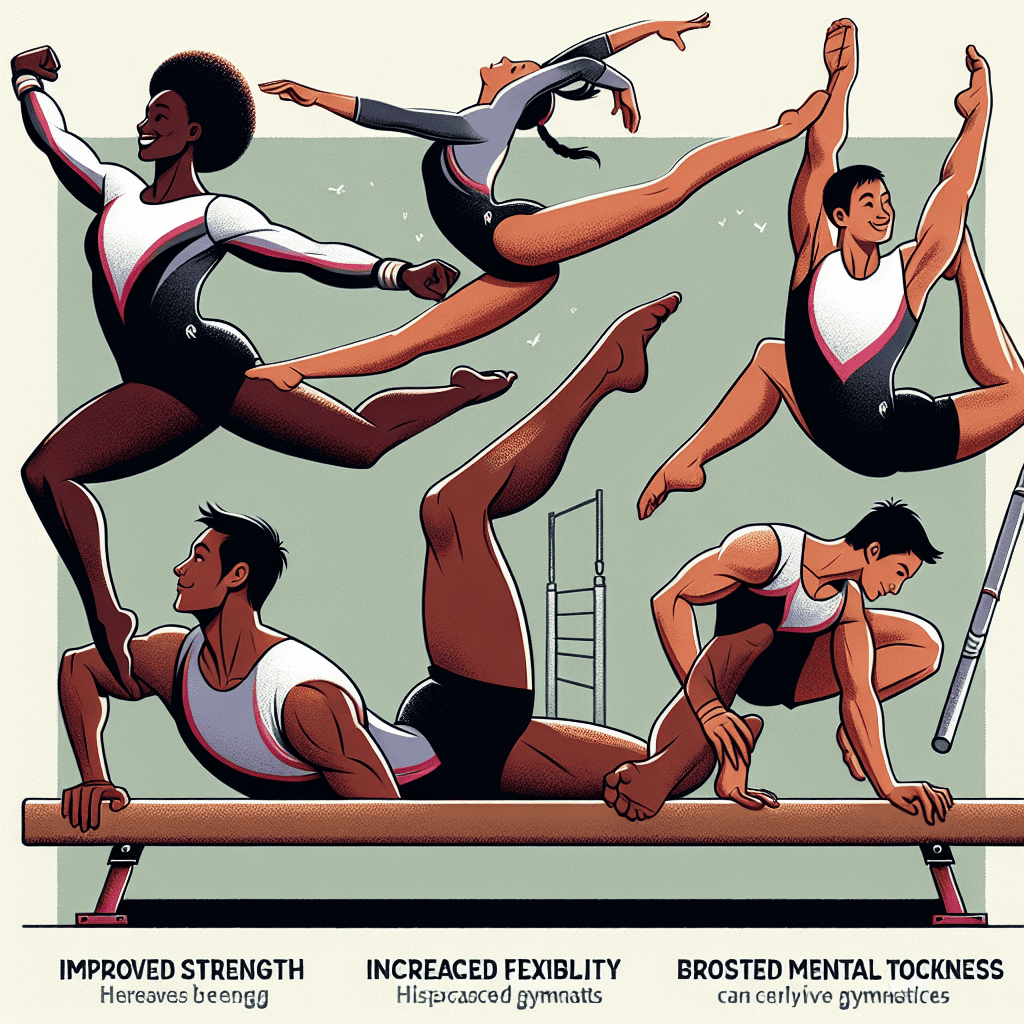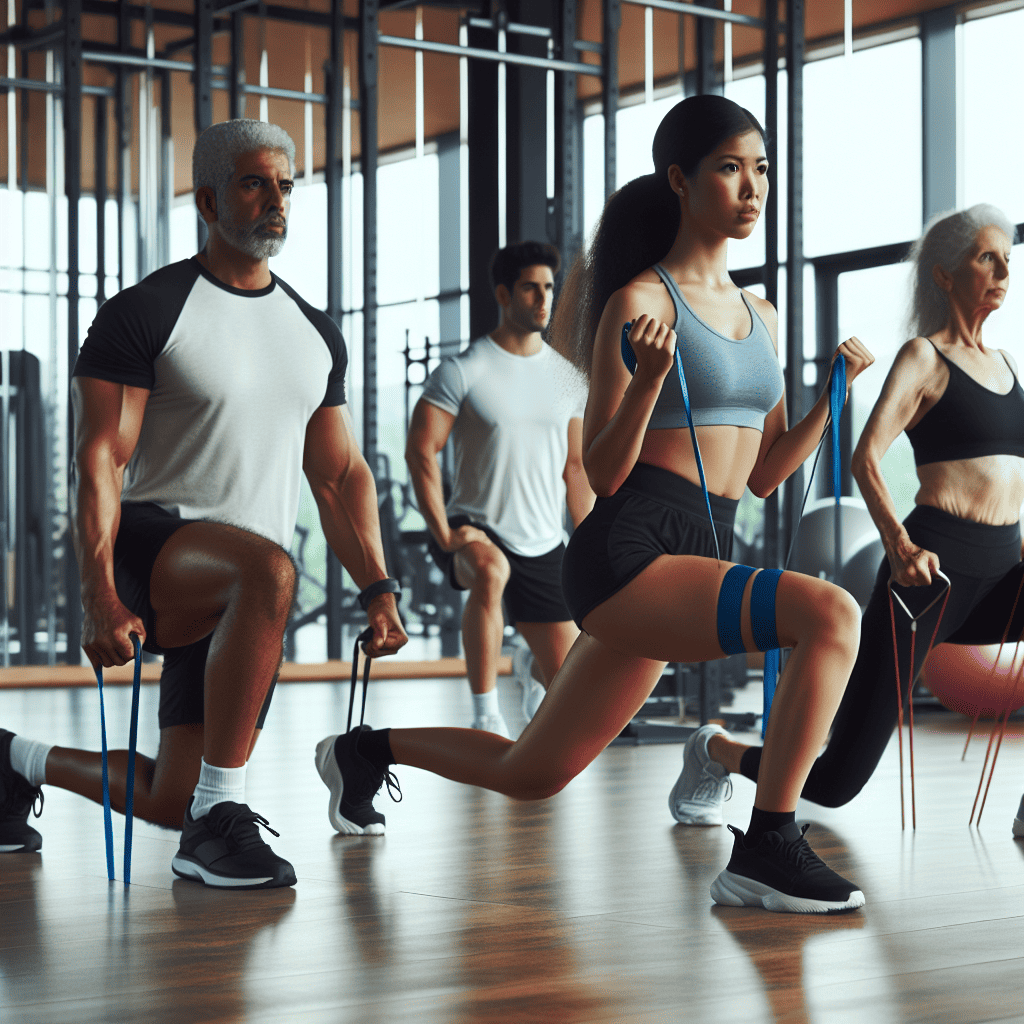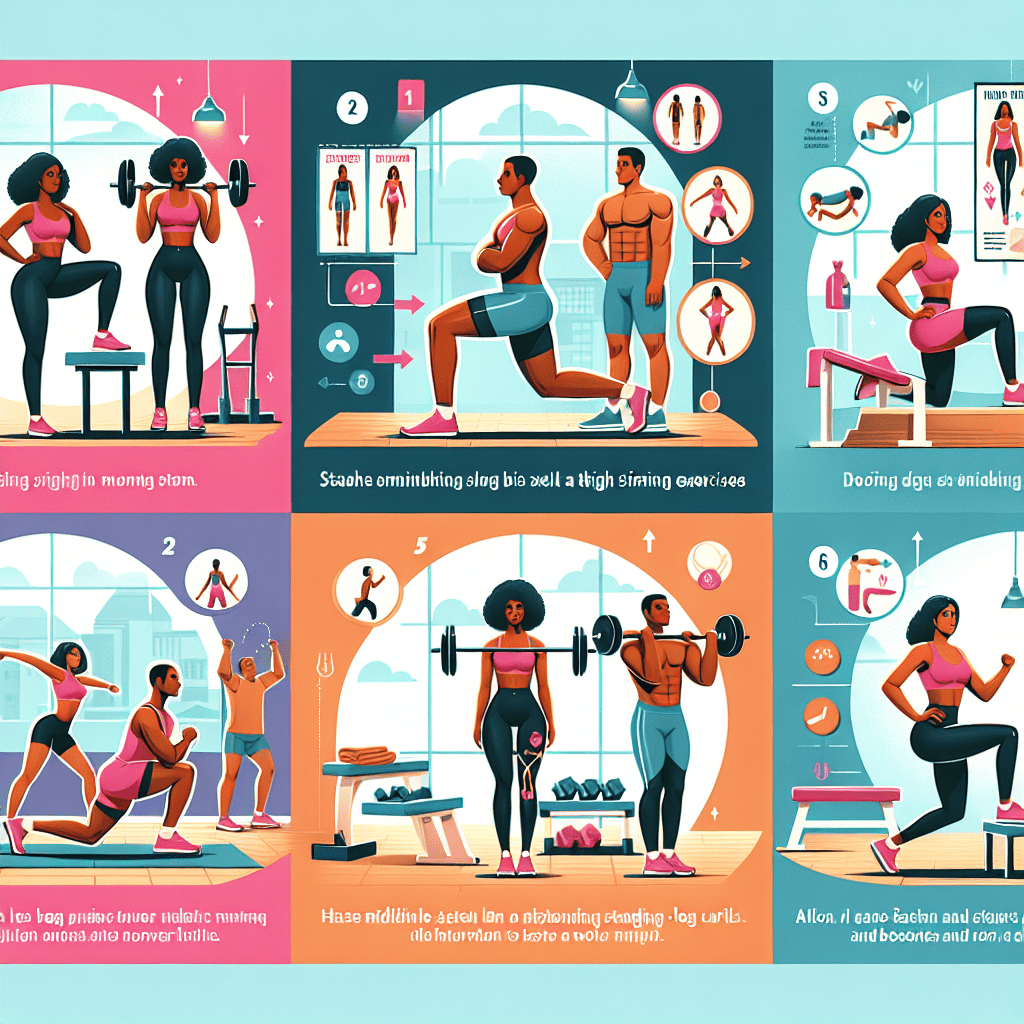Introduction: Gymnastics, a captivating sport and physical activity, offers a myriad of advantages along with specific rules and risks. This guide delves into the benefits that improve physical and mental well-being, the essential rules to ensure safe and fair play, and the potential risks associated with the sport. Read on to discover the comprehensive aspects of gymnastics.
Table of Contents
Benefits of Gymnastics
Discover the multitude of benefits that gymnastics provides to individuals’ overall health and well-being.
- Reducing the Risk of Exposure to Diseases:
Participating in gymnastics exercises offers numerous health benefits beyond just physical fitness. Not only does this form of physical activity help in reducing the risk of developing diseases like obesity, heart disease, asthma, and cancer, but it also plays a vital role in promoting a holistic healthy lifestyle. Gymnastics require a combination of strength, flexibility, balance, and coordination, which all contribute to improved overall health. By engaging in gymnastics, individuals not only work on their physical fitness but also enhance their mental and emotional well-being. The discipline and focus required in gymnastics can also aid in stress reduction and improving cognitive function.
Furthermore, gymnastics exercises are particularly beneficial for strengthening the immune system. Regular physical activity, such as gymnastics, has been shown to boost the immune system by promoting good circulation and supporting the efficient functioning of immune cells. A strong immune system is essential for fighting off infections and diseases, making gymnasts less susceptible to common illnesses. In addition to the physical benefits, participating in gymnastics can also improve self-esteem and confidence. Mastering new skills, overcoming challenges, and achieving personal goals in gymnastics can boost self-confidence and provide a sense of accomplishment.
In essence, gymnastics is a holistic approach to health and well-being that goes beyond just physical fitness. By engaging in gymnastics exercises, individuals can strengthen their bodies, improve their mental health, and enhance their overall quality of life. The combination of physical exertion, mental focus, and emotional engagement in gymnastics can lead to numerous health benefits, ranging from reducing the risk of chronic diseases to boosting immunity and self-confidence. Therefore, incorporating gymnastics into a regular fitness routine can be a fantastic way to cultivate a healthy lifestyle and enjoy a multitude of physical, mental, and emotional advantages.
- Developing Motor Skills:
Regular practice of gymnastics involves a wide range of movements that help in enhancing mobility, coordination, and precision in motor skills. Gymnasts engage in various exercises that require flexibility, strength, and balance, which contribute to improved overall physical ability. For instance, exercises like splits, handstands, and flips demand high levels of flexibility and coordination, leading to increased range of motion in joints and better body control. By consistently practicing these movements, individuals can develop a strong foundation of motor skills that can be applied to various activities beyond gymnastics.
The enhanced motor skills gained through gymnastics practice can significantly improve daily movements and activities. Activities such as walking, running, climbing stairs, and even simple tasks like bending and reaching can become more efficient and fluid with better coordination and precision. The increased mobility from gymnastics training can help prevent injuries and improve posture, as the body becomes more adept at moving in a controlled and balanced manner. Additionally, the focus and concentration required during gymnastics routines can also enhance cognitive functions, such as attention to detail and quick decision-making, which can be beneficial in daily life.
Moreover, the benefits of improved motor skills extend beyond physical capabilities and can positively impact mental well-being. The sense of accomplishment and confidence that comes from mastering new gymnastics skills can boost self-esteem and resilience. Regular practice also helps in developing perseverance and discipline, as progress in gymnastics requires dedication and hard work. The supportive environment of a gymnastics class or team can foster a sense of community and camaraderie, further contributing to overall well-being. Therefore, the holistic benefits of gymnastics go beyond physical fitness and can lead to a healthier and more confident individual.
Rules of Gymnastics
Understand the essential rules that govern the practice of gymnastics to ensure safety and fairness in the sport.
- Enjoy Gymnastics:
Approaching gymnastics with a positive mindset not only impacts the performance but also has significant effects on the overall well-being of the athlete. When a gymnast carries a positive attitude, they are more likely to believe in themselves and their abilities. This belief is essential for building self-esteem as it helps the gymnast recognize their potential and value. With increased self-esteem, the gymnast will be more motivated to set and achieve goals, leading to a sense of accomplishment and fulfillment.
Furthermore, a positive mindset in gymnastics can significantly enhance confidence. Confidence is crucial in a sport like gymnastics that requires precision, control, and a level of risk-taking. When a gymnast approaches their routines with confidence, they are more likely to perform at their best and push their limits. Additionally, confidence can help gymnasts withstand the pressure of competitions and challenges, allowing them to focus on their performance rather than doubts or fears. This positive cycle of confidence leading to better performance and vice versa creates a strong foundation for growth and success in gymnastics.
Creating a supportive and encouraging environment within the gym is another benefit of approaching gymnastics with a positive mindset. Positivity is contagious, and when gymnasts, coaches, and teammates exude optimism and belief in each other, it fosters a sense of community and camaraderie. This supportive atmosphere not only makes training and competing more enjoyable but also provides a safety net for gymnasts to take risks, learn from their mistakes, and continuously improve. Ultimately, the combination of self-esteem, confidence, and a positive environment strengthens the gymnast both mentally and physically, laying the groundwork for a successful and fulfilling gymnastics journey.
- Avoid Wearing Jewelry:
In gymnastics, safety is of paramount importance to prevent injuries that could occur during routines. One crucial safety measure is for participants to avoid wearing any kind of jewelry that could get caught or cause harm. Jewelry such as rings, necklaces, bracelets, or dangling earrings pose a significant risk as they can easily get caught on equipment or the gymnast’s body during movements. This can not only disrupt the routine but also lead to serious injuries such as sprains or fractures. It is essential for participants to prioritize safety by removing all jewelry before engaging in any gymnastics activities.
Moreover, the prohibition of jewelry during gymnastics is also necessary to protect other participants and coaches. In a dynamic and fast-paced environment like a gymnastics practice or competition, the presence of jewelry on one individual can pose a risk to everyone involved. For instance, if a piece of jewelry were to come loose and fall onto the gymnastics floor, it could cause someone to slip or trip, leading to potential injuries not only to the gymnast wearing the jewelry but also to others nearby. By adhering to the rule of not wearing jewelry during gymnastics, participants contribute to a safer environment for everyone in the gym.
Additionally, refraining from wearing jewelry during gymnastics movements is a sign of respect for the sport and its traditions. Gymnastics is not only physically demanding but also requires mental focus, discipline, and adherence to rules and regulations. By following guidelines such as avoiding jewelry, participants demonstrate their commitment to the sport and its values. It shows a willingness to prioritize safety, adhere to established norms, and maintain a professional approach to training and competition. Ultimately, by respecting the safety rules in place, gymnasts can enjoy their practice and competitions with reduced risks and focus on improving their skills and performance without unnecessary hazards.
The Damages of Gymnastics
Learn about the potential risks and damages that can be associated with practicing gymnastics to ensure participants are aware of the possible challenges.
- Concentrated Effects on Body Parts:
Participating in gymnastics involves putting concentrated stress on various body parts like the lower back, ankle area, knee, shoulder, wrist, and elbow. The lower back is often strained due to the extensive bending, twisting, and arching movements involved in gymnastic routines. Ankle injuries can occur from the impact of landing after jumps and flips, while knee injuries are common from the high-intensity movements like tumbling. Shoulder injuries can result from the overhead movements and weight-bearing activities, with wrist and elbow injuries often stemming from supporting body weight during handstands and other maneuvers.
To mitigate the risk of long-term damage from gymnastics, it is crucial to follow proper training techniques and incorporate effective injury prevention strategies into the routine. This includes implementing thorough warm-up exercises to prepare the body for the demands of the sport, focusing on strength and flexibility training to support the muscles and joints, and ensuring proper equipment usage to prevent unnecessary strain. Additionally, it is important to listen to the body and not push through pain or fatigue, as overexertion can lead to serious injuries.
Regular monitoring by coaches, trainers, or medical professionals can also help in detecting and addressing any potential issues early on. They can provide guidance on proper form, technique correction, and personalized injury prevention exercises. Athletes should communicate any discomfort or pain immediately to ensure timely intervention and avoid exacerbating the injury. By prioritizing safety, listening to the body, and seeking professional advice, gymnasts can enjoy the physical and mental benefits of the sport while minimizing the risk of long-term damage to their body.
- Possibility of Permanent Risks:
In gymnastics, ensuring the safety of participants is paramount to prevent serious injuries that could have lasting impacts on an individual’s physical health and overall well-being. The high-intensity nature of gymnastics routines can put significant strain on the body, especially if proper techniques and precautionary measures are not followed. Excessive weight or pressure on certain body parts, such as joints, bones, and muscles, during flips, twists, and tumbles can result in severe injuries like sprains, fractures, or even long-term damage like chronic pain or limited mobility. These risks highlight the importance of gymnasts understanding their limits, respecting their bodies, and knowing when to seek help or advice from coaches, trainers, or healthcare professionals.
To mitigate the risks associated with gymnastics, participants must prioritize safe practice methods and listen attentively to their bodies’ signals. Overexertion or ignoring warning signs of discomfort or pain can exacerbate existing injuries or create new ones. It is essential for gymnasts to be proactive in communicating any concerns about their physical well-being to their coaches or medical experts. Seeking professional guidance not only aids in injury prevention but also promotes the adoption of appropriate conditioning exercises, warm-up routines, and recovery strategies. By fostering a culture of safety and open communication within gymnastics programs, athletes can better protect themselves from sustaining long-lasting harm while continuing to engage in their sport with confidence and resilience.
In addition to individual responsibility, coaches and gymnastics facilities have a vital role in ensuring the overall safety of participants. Coaches should be well-versed in proper technique, spotting methods, and injury prevention strategies to provide comprehensive guidance and supervision during training sessions and competitions. Gymnastics facilities should also adhere to safety protocols, maintain equipment regularly, and create a supportive environment that prioritizes the well-being of athletes. By establishing a collaborative approach to safety between gymnasts, coaches, and facilities, the risks of permanent injuries in gymnastics can be significantly reduced, allowing participants to enjoy the physical and mental benefits of the sport while minimizing potential long-term consequences.




